Unlike the emperor in the Hans Christian Andersen story, Emperor Moths are gorgeously clad with no need to hire any tailors, deceptive or otherwise.
Being the largest moths – and also the largest insects – in the world, Emperor Moths are not only impressive in size, but also they are beautifully marked with striking colouration. The wingspan of the largest Emperor Moths in Africa can be up to 180 mm.
In our garden, I came across a fairly large (wingspan up to about 130 mm) Speckled Emperor Moth (Gynanisa maja). This species can be found in many countries in Africa as far north as Chad, and in several countries in western, central, eastern and southern Africa.
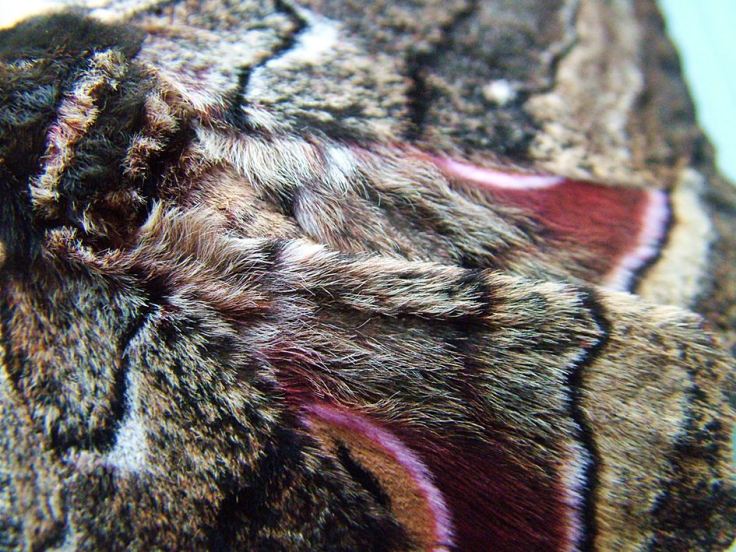
All Emperor Moths are “furry”, and the Speckled Emperor Moth particularly so, as can be seen in these photos taken of one individual resting during the day on a wall in our garden
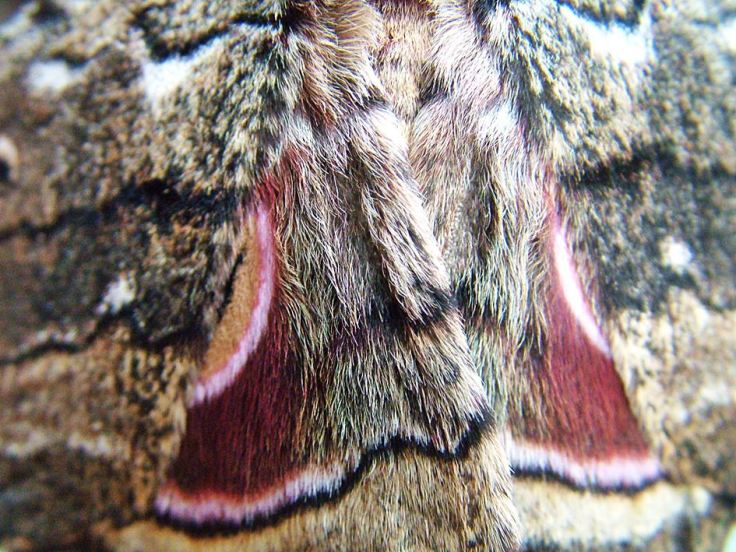
Emperor Moths belong to the family Saturnidae, with the name relating to the concentric rings of the planet Saturn and referring to the ring-like eyespots that many Emperor Moth species have on their wings. At rest the forewings cover the eyespots on the hind wings, but if disturbed, the moths quickly lift the forewings to suddenly reveal the eyespots, which may frighten off would-be predators.
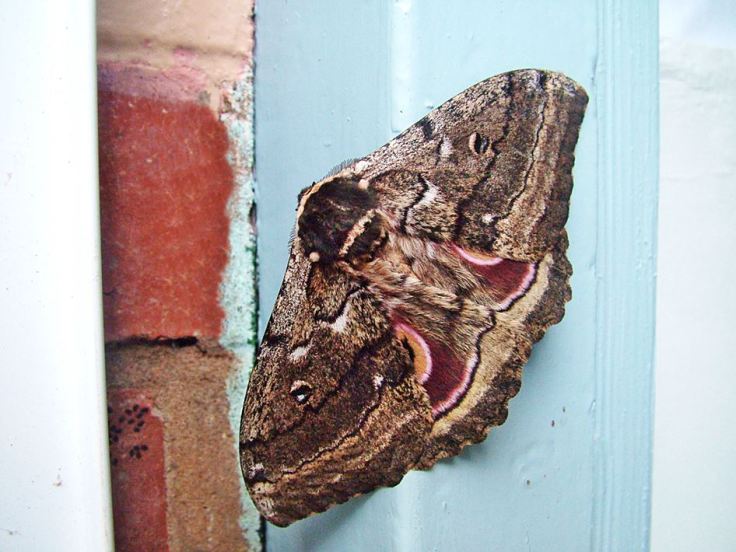
As can be seen in this photograph of a Speckled Emperor Moth, the eyespots on the forewings are small and dull, and the larger and colourful eyespots on the hindwings are just visible, partly concealed by the forewings
Emperor Moths can be found in many countries around the world, with most occurring in the tropical regions. They are mostly nocturnal, flying late at night and are reluctant to fly during the day, even when disturbed.
But when and what do they eat, you may ask? The answer is: nothing. In their adult (moth) form they do not eat at all, and their mouth parts are so small that they are actually incapable of eating. The moths live from three to five days, long enough to breed and short enough for their “clothing” to always be new. The males die after mating and the females die after laying their eggs.
Emperor moth larvae (caterpillars) do the eating, and most eat foliage. Some species of these caterpillars burrow into the ground as a protection from predators, to pupate before hatching as moths.
Perhaps the most famous African Emperor Moth caterpillars are those known as Mopane “worms” (Gonimbrasia belina), which are a popular food source for people in some regions of southern Africa, where the caterpillars can be a cheap source of protein. The caterpillars are picked in the wild, degutted and then they are dried to preserve them. They can be rehydrated before cooking. In some areas in a good harvest season, cooked Mopane worms are canned.
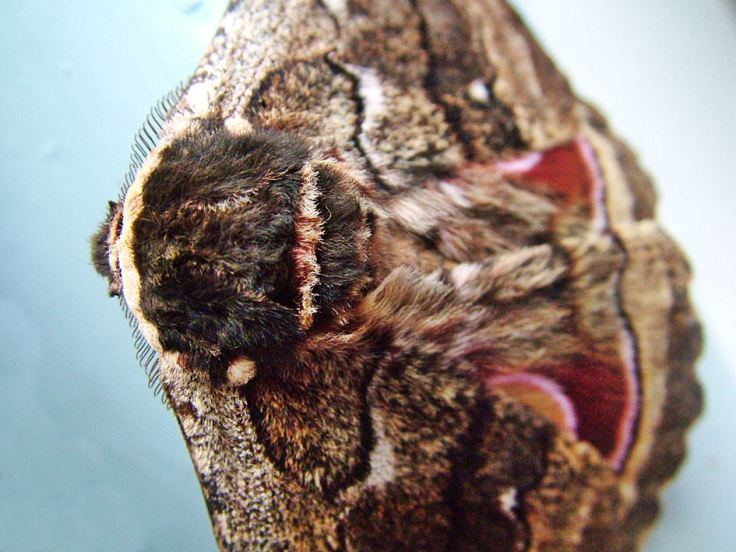
Generally the females are larger than the males, though males have more feathery antennae than the females. I would guess that this individual is a female. In this photo, the fine antennae are just visible as they are being held along the edges of the forewings, on either side of the head
In Africa, most Emperor Moths are found in open country, with only a few species found in arid regions and even fewer in forests. There is one southern African species that has adapted to pine and bluegum plantations where the larvae are considered a pest.
The females lay eggs even if they have not mated, and mostly these unfertilised eggs do not hatch, but amazingly in one of the subspecies, eggs laid by females that have not mated do hatch and the offspring develop normally, a process known as parthenogenesis.
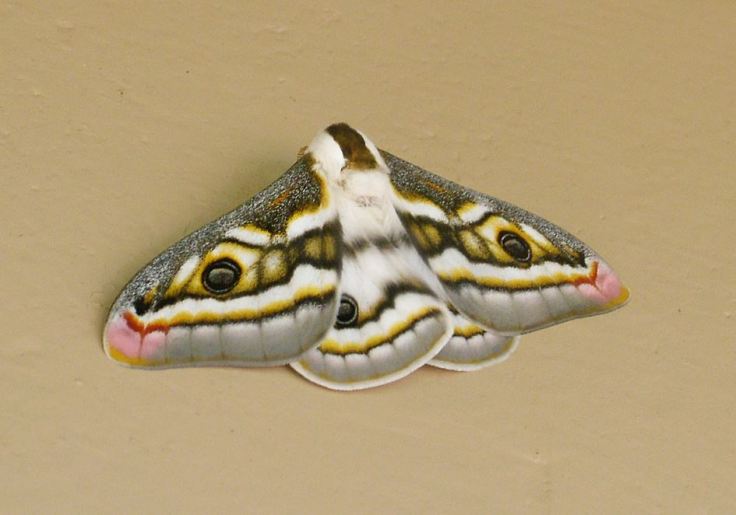
Pictured above is another beautiful Emperor moth that I was able to photograph in our garden. Like the Speckled Emperor Moth, it was also resting during the day on a wall in the shade. It is a Southern Marbled Emperor (Heniocha apollonia). Its range is restricted to the countries of southern Africa
Sources: Pinhey, E. 1972. Emperor Moths of South and South-Central Africa. Cape Town: Struik; Scholtz, C.H. and Holm, E. 1985. Insects of Southern Africa. Durban: Butterworths.
Posted by Carol

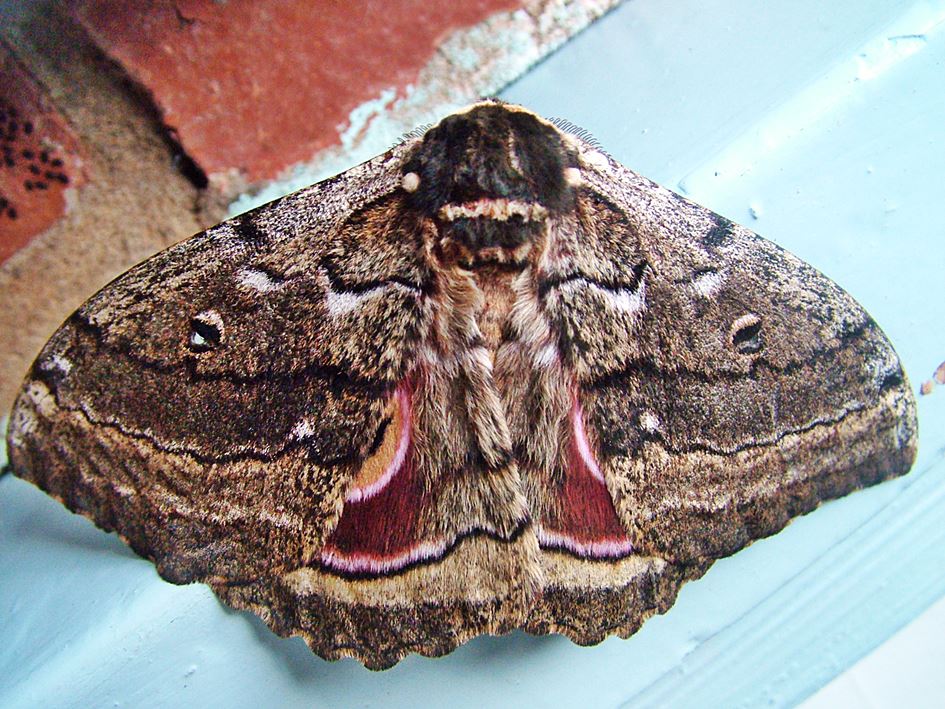







July 4, 2020 at 12:39 am
Hi there, I have a few pics of this huge gorgeous green moth (I think) that came through the gap in the sliding door at around 2am! My cat nearly got him! Fortunately not! I would love to know what it is? Have left my WhatsApp number below, I took a few pics and a video, then let him back out. Honestly I thought it was a tiny bird flapping around the way he was going on! Any assistance would help my curiosity please 😊
LikeLike
July 6, 2020 at 2:19 pm
Hi there, I will send an sms as I do not use WhatsApp. Taking a wild guess, I wonder if it might an African Lunar Moth. See
https://www.africanmoths.com/pages/SATURNIIDAE/SATURNIINAE/argema%20mimosae.htm
LikeLike
July 6, 2020 at 2:56 pm
Alternatively, you could email me at naturebackin@mweb.co.za. Thanks.
LikeLike
June 5, 2017 at 3:39 am
Such beauties!🦋
LikeLiked by 1 person
June 5, 2017 at 6:41 am
Yes they are! Sadly though, I see them far less often than I used to.
LikeLiked by 1 person
April 15, 2017 at 9:32 am
Gosh – simply stunning! And as usual, plenty of snippets to assimilate whilst admiring the photography and the wildlife in your backyard. (I could never bring myself to sample mopane worms when we were in Mozambique. And I had no idea that this is what they would have become had the life cycle run its full course.)
LikeLiked by 1 person
April 15, 2017 at 10:28 am
Thank you Sandra. I hope that you enjoyed your time in Mozambique. Mopane worms do not occur in our region. I have heard that the drought further north has reduced their numbers as their food sources (and of course also the food sources of people) have been affected by the long period of dryness.
LikeLike
April 16, 2017 at 8:21 am
Carol, I am intrigued now by the mopane worms not occurring in your region. Does this mean that not all the emperor moth caterpillars are edible? Presumably those moths that you have in your area haven’t made the long flight from further north but were once caterpillars themselves – in your garden! 🙂
LikeLike
April 17, 2017 at 6:06 pm
The Speckled Emperor Moth is a different species to the Mopane one and has a different geographical distribution and feeds on different plants. So yes, the one’s in our garden likely developed from larvae in the area and would not have migrated from further north, and as far as know this species is not considered to be edible by people. I gather that there are 65 species of Emperor Moths that occur in southern Africa.
LikeLiked by 1 person
April 18, 2017 at 8:47 am
Thanks for this Carol 🙂
LikeLiked by 1 person
April 14, 2017 at 4:12 pm
I do admire how closely you photograph! The details make the moth even even more miraculous.
LikeLiked by 1 person
April 15, 2017 at 10:19 am
Thanks very much. The luxuriant covering on these moths is wonderfu.
LikeLike
April 14, 2017 at 6:10 am
It is getting to that ‘moth’ time of year and the butterflies are active in our garden too. Lovely photographs and interesting information. It is always a pleasure to read your articles.
LikeLiked by 1 person
April 14, 2017 at 6:57 am
Thanks so much Anne. Yes lots of butterflies floating and flitting here too. Lovely to enjoy but too fast and erratic for my camera!
LikeLike
April 14, 2017 at 1:37 am
Beautiful!
LikeLiked by 1 person
April 14, 2017 at 6:54 am
Thanks Eliza. Indeed they are beautiful.
LikeLike
April 13, 2017 at 9:41 pm
They are quite beautiful. Thanks for all the information!
LikeLiked by 1 person
April 14, 2017 at 6:53 am
Thank you Sandy. This was meant to be a short post but I found more snippets than expected that I decided to share.
LikeLiked by 1 person